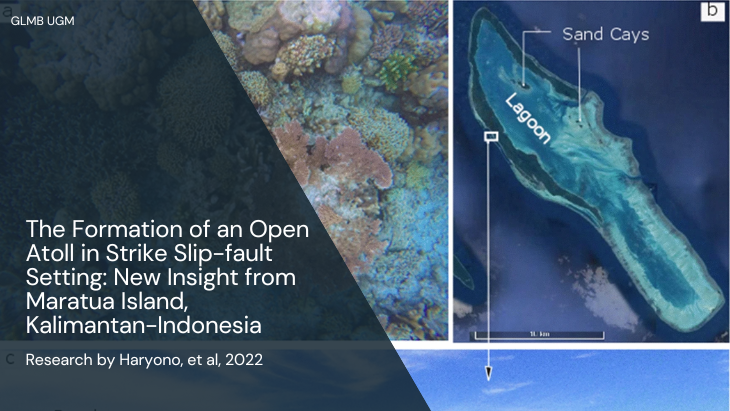
Research by Haryono et al., 2022
This study aims at reconstructing the mechanism explaining the formation of the V-shaped open atoll of Maratua Island. The reconstruction was conducted by examining the landforms, lithology, and geological structure of the region. We first examined the island through ALOS, SRTM image and using an oblique aerial photograph taken using a drone. Then, a field survey was conducted to identify the detailed morphological features, lithology, and structure of the area. The results reveal that the island has developed into seven different landforms, namely, karst ridge, undulated karst hills, structural valley, marine terrace, beach, fringing reef, and sand cays. The sinistral fault system is the major factor that controlled the Maratua Island’s formation, wherein the island is a push-up morphology of the fault that formed a carbonate high. Accordingly, the atoll formation seems to be an inheritance of eroded rollover anticline of Pliocene carbonate or older and continuing to the present time. The open atoll is caused by the southern block’s downward movement resulting from an oblique subsidiary sinistral fault mechanism. The research findings unveil new mechanism of atoll formation in the strike-slip fault setting that enrich the previous models.
Keywords: Open atoll, Karst Island, Maratua Island, Slip fault, Atol formation





